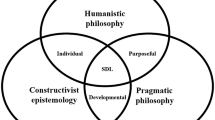Abstract
This paper describes how some aspects of Martin Heidegger’s philosophy resonate strongly with an engineering outlook. He argued that practice was more “primordial” than theory, though preserving an important role for theoretical understanding as well, thus speaking to the gap between engineering education (highly theoretical) and engineering practice (mostly empirical). He also underlined the reality of “average” practices into which we are socialized, though affirming the potential for original work and action too, thus providing the grounds for self-actualization whether within the routine or in transcending it. His notion of “thrownness” emphasizes the importance of context, with which engineers are constantly engaged. While all this relates to the idea of our “being”, Heidegger also dealt with the influence of time on our practices. Future death could be seen as spurring innovation, cultural history as a source for critiquing current practice and the present “situation” as the immediate context for corrective action. His major book is appropriately called “Being and Time”.1
Similar content being viewed by others
References
Heidegger, M. (1997) Being and Time, (transl.) J. Stambaugh, SUNY Press, Albany, N.Y.
Dreyfus, H.L. (1988) Husserl, Heidegger and Modern Existentialism, in (ed.) B. Magee, Great Philosophers: An Introduction to Western Philosophy, Oxford University Press, Oxford, pp. 252–277.
Heidegger, M. (1962) Being and Time, (transl.) J. Macquarrie & E. Robinson, SCM Press, London.
Polanyi, M. (1958) Personal knowledge: Towards a Post-critical Philosophy, University of Chicago Press, Chicago.
Polanyi, M. (1966) The Tacit Dimension, Doubleday & Co., Garden City, N.Y.
Hickman, L.A. (1990) John Dewey’s Pragmatic Technology, Indiana University Press, Bloomington, 1990.
Turk, Z. (2001) Phenomenological foundations of conceptual product modeling in AEC, International Journal of Artificial Intelligence in Engineering, 15: 83–92.
Nuttgens, P. (1988) What should we Teach and How should we Teach it?: Aims and Purpose of Higher Education, Gower Publishing Company, London.
Dreyfus, H.L. (1991) Being-in-the-world: A Commentary on Heidegger’s “Being and Time, Division I”, MIT Press, Cambridge, Mass.
Davis, M. (1998) Thinking like an Engineer: Studies in the Ethics of a Profession, Oxford University Press, New York.
Turk, Z. (1998) On theoretical backgrounds of CAD, in (ed.) I. Smith, Artificial Intelligence in Structural Engineering, Springer, Berlin, pp. 490–496.
Turk, Z. (2001) Multimedia: Providing students with real world experiences, Automation in Construction, 10(2): 247–255.
Dias, W.P.S. and Blockley, D.I. (1995) Reflective Practice in Engineering Design, ICE Proceedings on Civil Engineering, 108(4): 160–168.
Dias, W.P.S. (1997) Sensitivity and substitutability in concrete construction, Asia Pacific Building and Construction Management Journal, 2(2): 32–34.
Florman, S.C. (1994) The Existential Pleasures of Engineering, 2nd ed., St. Martin’s Press, New York.
Heidegger, M. (1977) The Question Concerning Technology and Other Essays, (transl.) W. Lovitt, Harper and Row, New York.
Heidegger, M. (1971) Poetry, Language, Thought (transl.) A. Hofstader, Harper and Row, New York.
Dias, W.P.S. (2003) Heidegger’s Relevance for Engineering: Questioning Technology, Science and Engineering Ethics, 9(3): 389–396.
Snodgrass, A. and Coyne, R. (1992) Models, metaphors and the hermeneutics of designing, Design Issues, 9(1): 56–74.
Author information
Authors and Affiliations
Corresponding author
Rights and permissions
About this article
Cite this article
Dias, W.P.S. Heidegger’s resonance with engineering: The primacy of practice. SCI ENG ETHICS 12, 523–532 (2006). https://doi.org/10.1007/s11948-006-0050-7
Received:
Revised:
Accepted:
Issue Date:
DOI: https://doi.org/10.1007/s11948-006-0050-7




